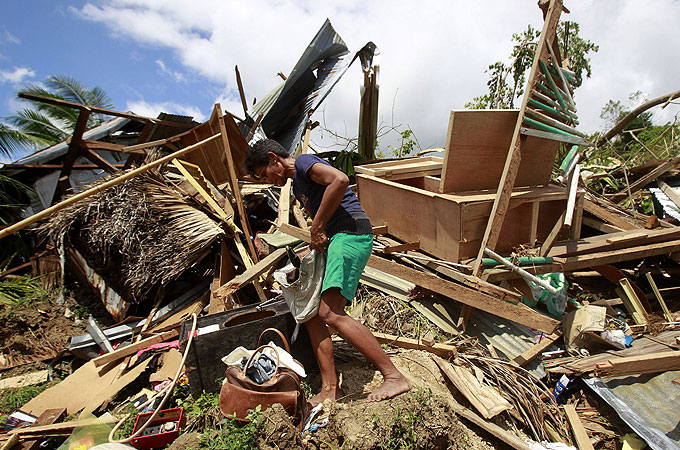‘Little hope’ for Philippines quake survivors
Rescue officials say hope is fading in search for 71 people still missing in landslides triggered by powerful quake.

 |
| The 6.7-magnitude earthquake triggered landslides that has left many buried inside the mud [Reuters] |
Officials in the Philippines say there is little hope of finding dozens of people still buried in landslides triggered by a powerful earthquake on the heavily populated islands of Negros and Cebu.
Survivors of the disaster called on rescuers on Wednesday to keep searching for the missing, two days after the magnitude-6.7 quake struck that has claimed at least 26 lives so far.
Keep reading
list of 4 itemsPhotos: Kenya sanctuaries toil to save birds of prey from extinction
The Final Breath
Malaysia plans ‘orangutan diplomacy’ in palm oil pitch
“Please do not give up, please continue searching,” the AFP news agency quoted 47-year-old Virginsita Magalso as saying, her face streaked with dirt, as rescuers picked through mounds of dirt that covered the homes of family and friends.
“We can still save them, miracles happen all the time.”
According to official estimates, about 71 people are still missing from farming communities that had been engulfed by landslides in La Libertad and the nearby city of Guihulngan.
|
|
Rescue workers have not found anyone alive under the concrete rubble, rocks and mountain soil since the quake struck on Monday.
“I am still hoping against hope, but the chances (of recovering survivors) are very slim,” Benito Ramos, head of the office of civil defence, said.
“If you see the landslide, it’s huge and there is no chance of them surviving.”
Ramos accompanied President Benigno Aquino III on a visit to the disaster area, during which Aquino ordered the immediate construction of detour roads to revive commerce and speed up the delivery of relief supplies.
Aquino criticised the shoddy road construction, while Ramos said bridges that were damaged were not built to sustain such a powerful quake.
Remote regions
Guihulngan is about 90km to the north of Dumaguete, the capital of Negros Oriental province that covers the southeastern edge of Negros where the worst effects of the quake were felt.
Seismologists said more than 700 aftershocks battered Negros during the 20 hours following the initial quake, which struck at about mid-day local time on Monday.
With rescuers still to reach remote hinterland communities, Negros Oriental governor Roel Degamo said he feared there could be more unreported casualties.
“Sadly, we expect the death toll could still rise,” Degamo told AFP.
Telephone communications in some parts of Negros were also cut off, leaving information from remote regions unobtainable, according to Degamo.
Cebu, the Philippines’ second biggest city with 2.3 million residents and a popular tourist destination, was 50km from the epicentre and shook violently during the initial quake but no deaths were reported there.